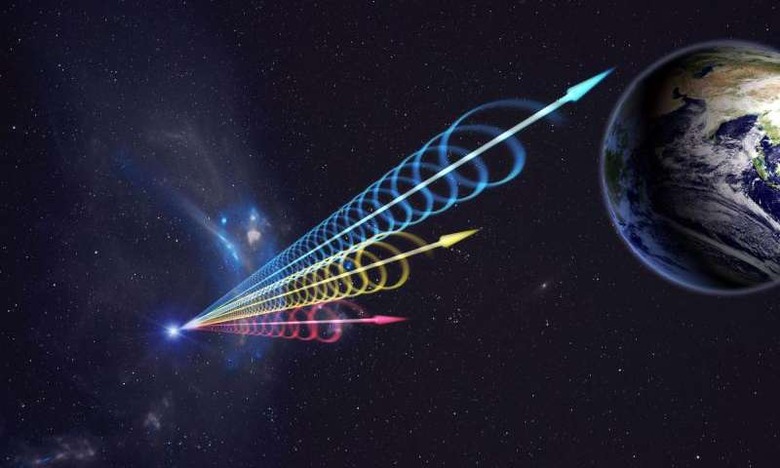Fast Radio Burst From Space Found Rich With Data
While astronomers have known about Fast Radio Bursts for a while now, never before have they been able to be utilized as they are here in the year 2015. A study has been published which not only shows where one unique fast radio burst likely originates from, but what sorts of elements in encountered on its way to our sensors, billions of light-years away from its source. Behold, FRB 110523, the object of this galactic study. The data it brings tells tales of its travels.
Astronomers used software developed by Kiyoshi Masui and Jonathan Sievers to detect the Fast Radio Burst they'd be working on. Masui is an astronomer with the University of British Columbia as well as the Canadian Institute for Advanced Research. Jonathan Sievers hails from the University of KwaZulu-Natal in Durban, South Africa.
ABOVE: The 100-meter Green Bank Telescope, as used in this study, operating in the National Radio Quiet Zone and the West Virginia Radio Astronomy Zone, as part of the National Radio Astronomy Observatory.
Professor Maura McLaughlin of the Eberly College of Arts and Sciences also worked on the project.
"This is the first Fast Radio Burst detected with the Green Bank Telescope, and the data were recorded in an unusual mode and at a unique frequency compared to previous bursts, offering new information about the origins," said McLaughlin.
Using the team's specialized software, they captured a whopping 40 terabytes of data over a short period of time. Inside this data was the FRB they'd be working on – just as soon as they could find it.
One reason for the massive amount of data collected was the smearing of data over time and space, otherwise known as dispersion. This team's software was able to syphon down the data to around 6,000 candidate signals.
The 6,000 candidates signals were inspected one by one by team member Hsiu-Hsien Lin from Carnegie Mellon University in Pittsburgh. One candidate remained – it was FRB 110523.
Thanks to the discovery of a polarization element that'd never before been found in an FRB, this signal was able to squeeze out more information along the lines of its own origins.
""This tells us something about the magnetic field that the burst traveled through on its way to us, giving a hint about the burst's environment," said Masui.
"It also gives the theorists a bit more to work with when they come up with explanations for these bursts."
This twist was joined by data which indicated the signal had passed through two screens, or regions of ionized gas, on its way to Earth. One of these indicators showed a screen to have been passed through just a hundred thousand light-years from its source, aka inside the galaxy that played host to this signal.
A nebula must have surrounded the source environment – otherwise the source will have been extremely close to the center of the galaxy. One of these two possibilities is likely true.

The image you see above was created by Jingchuan Yu of the Beijing Planetarium. It depicts a visualization of the otherwise invisible Fast Radio Burst (FRB) on its way to Earth.
"This burst should be the first of many detections of FRBs with the GBT" said McLaughlin, "In addition, new systems that can detect FRBs in real-time are being developed for the GBT."
"These will enable follow-up at these events with other telescopes at multiple wavelengths, bringing us even closer to understanding their origins."
You can find out more about this study in the paper "Dense magnetized plasma associated with a fast radio burst" by authors Kiyoshi Masui, Hsiu-Hsien Lin, Jaswant K. Yadav, et. all in the publication Nature under code doi:10.1038/nature15769 starting in December of 2015.
